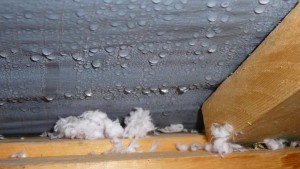Smells, Discoloration, and Musty Odors in a Basement or Crawl Space

OUR SERVICE AREA
|
Monmouth County Aberdeen Middlesex County Avenel Somerset County Basking Ridge Mercer County Bear Tavern Ocean County Barnegat Bergen County Allendale Essex County Academy Hudson County Arlington Hunterdon County Annandale Morris County Boonton Passaic County Allwood Sussex County Andover Union County Baltusrol Warren County Allamuchy Atlantic County Folsom Burlington County Beverly Camden County Albion Cape May County Anglesea Cumberland County Bivalve Gloucester County Almonesson Salem County Alloway |
 Smells, stains, and mildewy odors can find their way into a basement from a number of sources.
Smells, stains, and mildewy odors can find their way into a basement from a number of sources.
This section deals with exactly what causes smells and stains in a basement, consisting of dog and pet cat urine spots, and what can easily be done to wash these up.
What Causes Crawl Space and Basement Odors?
In a word: humidity. Most Crawl spaces and basements are actually full of the stuff. Humidity can permeate into a below-grade space constantly through the concrete and dirt walls of a basement, causing considerable concerns in a residential property as they’re trapped inside the space.
If your basement walls look dry: This is not an indicator that humidity is not entering into your basement.
If you’ve ever owned a potted plant, you know that the surface area can be dry even when the pot is heavy with water. This is since the wetness is pulled out by the air as quickly as it rises up.
One very good test to see if your basement is releasing humidity into your home is to lay plastic directly on the basement floor. Wait Two Days and get rid of the plastic- if your floor is wet, then the humidity that would otherwise get in the basement was trapped underneath the plastic.
732-722-5211
[accordionmenu id=”uniqueab4c349″ accordionmenu=”7060″]

We’ll help you get your damage clean and restore. All you have to do is Make The Appointment!

Make certain to search for various other signs of basement humidity as well, such as rust, mold, deteriorating fiberglass, and an uneasy sensation in the basement.
Eventually, though, if your basement smells stuffy, you can almost rest assured that humidity is the culprit.
Humidity will make the space uncomfortable, however humidity alone won’t cause odors. The serious reason for the smells in your basement is mold, rot, allergen, and mildew in the space. Below’s jsut a couple of things that mold can grow on:.
- Leather and Cloth.
- Drywall and Wood.
- Fiberglass Resins and Dyes.
- Paper and Cardboard.
- Paint and Wallpaper.
 Mold can likewise grow where you can’t see it, which include behind drywall or wood panels. Researches have actually shown that this mold is just as dangerous as the mold you can see. Click to find out more about house mold. Or, you can click to read more about stopping basement humidity.
Mold can likewise grow where you can’t see it, which include behind drywall or wood panels. Researches have actually shown that this mold is just as dangerous as the mold you can see. Click to find out more about house mold. Or, you can click to read more about stopping basement humidity.
In a crawlspace, the source of the concern is really comparable. Nevertheless, this area can also occasionally end up being a habitat for animals, which can live – and die – in a crawlspace. Cats, skunks, and other animals have actually been known to spray or urinate in a crawl space, and dead animals can create a nearly unbearable smell.
Sources of Basement and Crawl Space Stains.
While discolorations in a crawlspace are not typically something a resident is worried about, basement discolorations can be ugly, depressing, and undesirable to lots of homeowners. When they stain bare concrete, it can seem like removal is hopeless. Here are simply a few ways concrete can become stained:.
- Rust from pipelines, utilities, or leaking basement windows.
- Efflorescence from moisture seeping with the walls.
- Iron Ochre Stains.
- Dark Stains and Patches on Walls.
- Animal Urine Stains.
- Paint Stains.
- Oil Stains.
If you have stains on your basement walls of any type, the most effective way to look after the spots is to cover them with a plastic coating or a vapor barrier. Waterproof paints and basement wall coatings that adhere to the walls will quickly peel and end up being wrecked- commonly in as low as six months. Covering the problem with drywall and carpeting is asking for issue too- the moisture from the concrete basement walls can gather behind drywall and underneath carpets, causing mold and rot. To learn more about basement drywall Click here.
Cleaning Stains and Odors in a Basement or Crawl Space.
 Cleaning concrete stains in a basement is exceptionally challenging. In truth, feline urine discolorations in a basement floor can be so acidic and damaging that these can actually pit the concrete! There are times when brand-new concrete is the only solution. However, there are some methods in the industry to clean stained concrete. When using cleaners, it’s often an excellent concept to deal with a small unnoticeable area before dealing with the entire space.
Cleaning concrete stains in a basement is exceptionally challenging. In truth, feline urine discolorations in a basement floor can be so acidic and damaging that these can actually pit the concrete! There are times when brand-new concrete is the only solution. However, there are some methods in the industry to clean stained concrete. When using cleaners, it’s often an excellent concept to deal with a small unnoticeable area before dealing with the entire space.
Pressure Washers and Concrete Cleaning Agents: There are items on the marketplace that are specifically made for the challening task of getting rid of stains from basement concrete. They’re made to literally blast the upsetting marks off the surfaces. Pressure washers, and power washers could be rented at regional hardware stores and simlar busineses.
Bleach and Water: In some cases, merely using bleach and a power washer may work almost also. Available to lease in hardware stores and other areas, they offer an excellent method to blast a basement surface clean. When renting out such an equipment is impossible, a durable push broom and a little effort can likewise make a difference.
Phosporic Acid: Effective for both concrete and tile, phosporic acid is a specifically excellent way to eliminate rust discolorations in the basement, and it works well on lime, efflorescence, gunk, and hard-water deposits. Like all acids, it can lighten the color of tile, and repeated acid washes will damage sufaces. Take care not to mix this chemical with ammonia, as it will cause hazardous fumes, and make sure to get in touch with an expert prior to using in your property. Wear gloves when using, and use this with a clean mop or acid-resistant brush. Resides left after cleaning and drying out can be removed with a vaccuum cleaner.
Muriatic Acid: This is a solution of hydrogen chrloide in water, and one of the most dangerous chemicals you can acquire for your residential property. This is an extremely destructive, strong mineral acid often utilized for industrial applications and is used in some home cleaning jobs. Hydrochloric acid need to be utilized with great care, as it can create an acidic mist that can damage eyes, skin, respiratory body organs, and intestinal tracts on contact. It can even rust metal. Hydrochloric acid can also integrate with other chemicals and cleaning agents to produce harmful chlorine gas. When utilizing that chemical, make sure to get in touch with a professtional and to use PVC gloves, a respirator, safety eye goggles, and chemical-resistant clothing and shoes. Make sure to dispose of remaining acid properly and right away for your safety, and utilize severe care at all times when dealing with it. Never put muriatic acid down a storm drain, sink, or toilet, as it can damage pipelines and influence the biological balance of your septic system. It’s not reccomended to use muriatic acid indoors, as the corrosive acid vapors can cause a great deal of damage- you ought to explore options such as phosporic acid or TSP (trisodium phosphate) instead.
This being stated, it can be a fairly powerful cleaner for masonry, concrete, and other surfaces. It can eliminate efflorescence and mineral deposits in addition to mortar stains, and it’s been known to eliminate pet discolorations and various other otherwise impossible-to-remove stains. As a last resort, this could get the job done that no other chemical is. If being used to clean efflorescence, bear in mind that unless the source of this white, flaky powder is likewise dealt with, new efflorescence will appear in time.
Coatings and Coverings: A covered odor can not reach your air. Covering over the smell with a finish such as non-toxic shellac might help keep the odors from the space. Installing a sub floor that acts as a vapor barrier can do double-duty- keeping smells away while making your floor suitable for carpeting while also covering over the smell.
Comparable coverings are also readily available for stained basement walls.
To schedule Basement Musty Odors Inspection appointment, call 732-722-5211 or click here.
